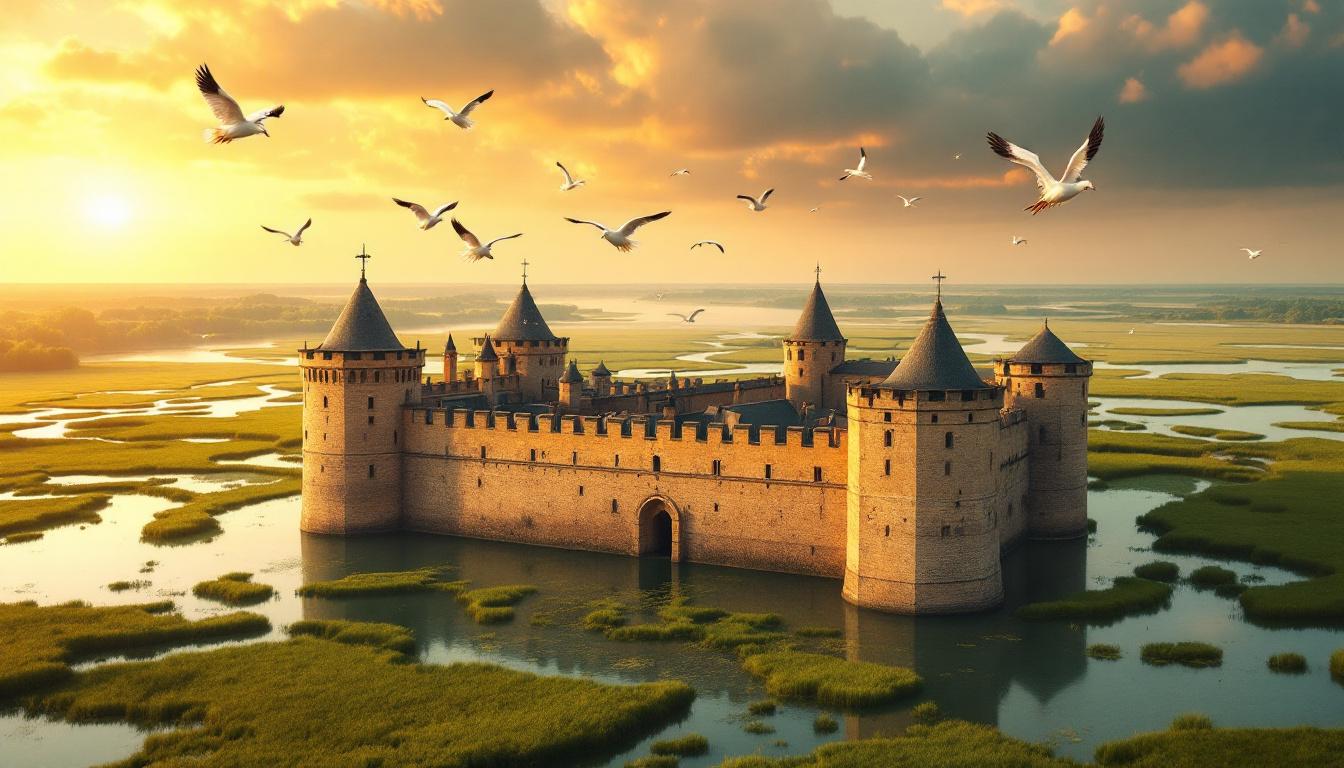Last August, I was driving from Cognac to La Rochelle when white storks circling above vast marshland caught my attention. Following an unmarked road through endless salt flats, I discovered what locals call “La Citadelle” – a perfectly preserved 17th-century fortress that makes Saint-Malo’s crowded ramparts feel like a tourist trap.
Brouage emerged from the marshes like a mirage, its honey-colored walls rising from emerald wetlands where herons outnumber visitors. This tiny fortified village spans just 0.162 square kilometers with only 108 residents, yet contains France’s most authentic Vauban military architecture without Saint-Malo’s summer chaos.
Cardinal Richelieu’s personal fortress had transformed my understanding of French heritage sites. Here was living history without gift shops, ramparts without tour groups, and authentic village life within walls that have stood unchanged for 400 years.
The accidental discovery that changed everything
Following birds instead of guidebooks
Those circling storks led me down Route des Oiseaux, a forgotten path through France’s largest bird sanctuary. As marshland stretched endlessly in every direction, I realized I’d stumbled into an ecosystem that supports over 300 bird species – more biodiversity than any coastal resort could offer.
Finding a fortress hidden by nature
Brouage’s ramparts appeared suddenly, their 13-meter-high walls camouflaged by centuries of marsh vegetation. Unlike Saint-Malo’s sea-facing defenses, these fortifications were designed to disappear into the landscape, creating natural camouflage that still protects the village from mass tourism today.
What I found that guidebooks never mention
Intact ramparts you can walk alone
Saint-Malo’s famous walls crawl with crowds taking identical photos, but Brouage’s 2-kilometer rampart walk remains blissfully empty. I spent an entire afternoon exploring seven bastions without encountering another tourist, watching storks nest directly on 17th-century watchtowers.
A village where locals still live inside fortress walls
While Saint-Malo’s intramuros has become a tourist zone, Brouage remains a functioning village where 108 residents live authentic daily lives. Artisan workshops occupy original garrison buildings, and the village baker still operates from Cardinal Richelieu’s former armory.
The transformation that surprised me most
Understanding authentic French heritage preservation
Brouage taught me the difference between restoration and preservation. Saint-Malo’s walls were rebuilt after WWII bombing, but Brouage’s fortifications remain original 1630s construction. Every stone tells an uninterrupted story spanning four centuries of French military history.
Discovering France’s hidden ecological treasure
The surrounding 11,000-hectare marsh system creates a natural moat that ancient engineers never imagined. This UNESCO-protected wetland filters out casual visitors while providing sanctuary for endangered species that have vanished from more developed coastlines.
Why I’ll never travel the same way again
Choosing substance over Instagram locations
Saint-Malo delivers predictable photo opportunities, but Brouage offers something rarer – authentic cultural immersion. Conversations with local artisans revealed four centuries of unbroken village traditions that commercialized destinations have lost to tourism.
Finding luxury in authentic simplicity
My €15 guesthouse in Brouage’s converted guardhouse provided more character than Saint-Malo’s €200 luxury hotels. Waking to storks clattering on medieval walls while marsh mist rolled across ramparts created memories no five-star resort could manufacture.
Brouage remains France’s best-kept secret because it refuses to compromise authenticity for convenience. The 30-minute drive from major tourist routes filters out casual visitors, preserving an intimate experience that crowded destinations have sacrificed.
Visit soon, but respectfully. This living museum depends on visitors who appreciate substance over spectacle. Book directly with village artisans, walk the ramparts during sunrise when storks are most active, and remember you’re entering a community, not an attraction.
Planning your authentic fortress experience
When should I visit Brouage for the best experience?
Late summer through early autumn offers perfect weather for rampart walks while maximizing bird watching opportunities. Storks remain active through September, and marsh colors peak during this harvest season.
How do I reach Brouage from major French cities?
Drive from La Rochelle (45 minutes) or Bordeaux (2 hours) via scenic coastal routes. Public transport is limited, which helps preserve the village’s authentic character and prevents overcrowding.
What makes Brouage different from other French fortified towns?
Brouage combines intact military architecture with active marsh ecology, creating a unique destination where historical preservation meets wildlife conservation. No other fortress offers this combination of cultural authenticity and natural beauty.
